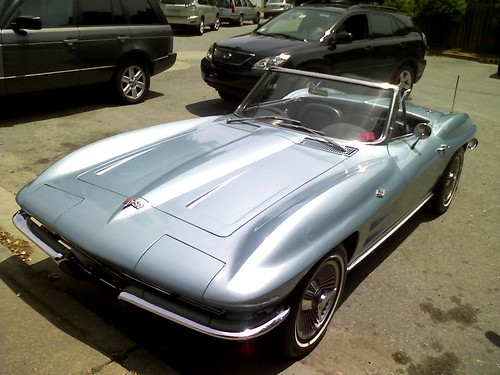Here's an idea I've had for a while... if you're good with strategy (see
Hey, Guys in Khakis) you might be able to fit the pieces together well enough to make a buck. I thought about building something like this at one point but I'm just not enough of a strategist or a consumer to have a real passion for it.
The premise is that most everyone always has some purchases they're planning, say two weeks to six months out in the future. The buyer has some characteristics in mind, a general idea of price, and is definitely going to buy in that time frame. But he or she doesn't have a specific item chosen nor a specific date when it's time to search out a deal and buy.
As just one example, if you like or need shiny gadgets, you might have thought
- I'm going to get a X-megapixel camera sometime this summer, I'm just too lazy to read all the reviews and sort it out right now.
- I'm want to buy my wife a bigger flat panel, but the prices are always bouncing around. I think I'll wait a while and see how much LCD real estate I can get for my money.
- I'm sick of encoding all these DVDs. When I see a deal on TigerDirect or techbargains I'll grab one of those DivX-capable DVD players and be done with it.
There's a market here: a lot of people are not actively searching today (using one of the many comparison shopping sites), but they are definitely buyers. Whether $150 is a good pricepoint or $1500, it's something they are comfortable with and have
essentially already decided to spend.
Today, this is an inefficient process on both sides.
The customer waits around until eventually he or she happens to hear the Fry's ad on the radio, drives by a store, or sees a chipmunk on the way to work and figures it's time to get a camera and start posting lolmunks.
The seller has limited visibility into who is interested in what products, when they plan to buy, and how much they'll spend. If a site has an extensive profile on you (say,
amazon) then maybe they could develop an algorithm to predict when you'll upgrade your camera, what you're likely to spend, and how you comparison shop. They could then communicate directly with you to try and close a sale. But most vendors have a fleeting relationship with the customer, so they spend lots on ads, make sure their products are listed on sites like
pricewatch, and hope the customer comes.
The opportunity is to create a market that lets vendors go look for buyers who want certain kinds of products, and make them an offer. For example, Fuji revs their cameras constantly, so maybe I have a bunch of a particular model, and I know the next line is coming out soon. If I want to move the inventory, I put it "on sale" and pay to advertise.
What if I could go and find a bunch of buyers who have said they're looking for this kind of camera at a price point I can stand and they're buying soon? My goal is to (1) offer them a price they'll buy at and (2) make enough on the sale that I'm still ahead of where I would have been in the "put in on sale and advertise" scenario.
This system would be a win-win. But several pitfalls must be overcome. Principally: How can you tell a "true buyer" from someone who just wants to window shop some really great deals? It makes a big difference to the seller, because publishing these kind of targeted deals out into the ether (offering them to arbitrary unverified people) is essentially the same thing as just publishing a lower price. It's asking the vendor to show his cards without the buyer committing anything.
So, to make this work, one needs at least a way of limiting the pool of "true buyers" to those who are plausibly legitimate. At the same time, it cannot be a closed system of fully committed participants since a "true buyer" may sign up, see some great deals, and legitimately decide to just forget it and buys something else that catches his eye. The buyer is not likely willing to be obligated to buy through this system.
The whole mechanism needs some sophistication, and probably a few small but key innovations that will keep people (mostly) playing fair on both sides. These might include unique valid credit cards, online reputation mechanisms, social networks, and some things that haven't been invented yet.
I believe such a market can and will be built. I expect to see someone clever or lucky make a bunch of cash building this and then selling it to
eBay. And although I don't love shopping nearly enough to want to build this product, I'd gladly be its first customer.








